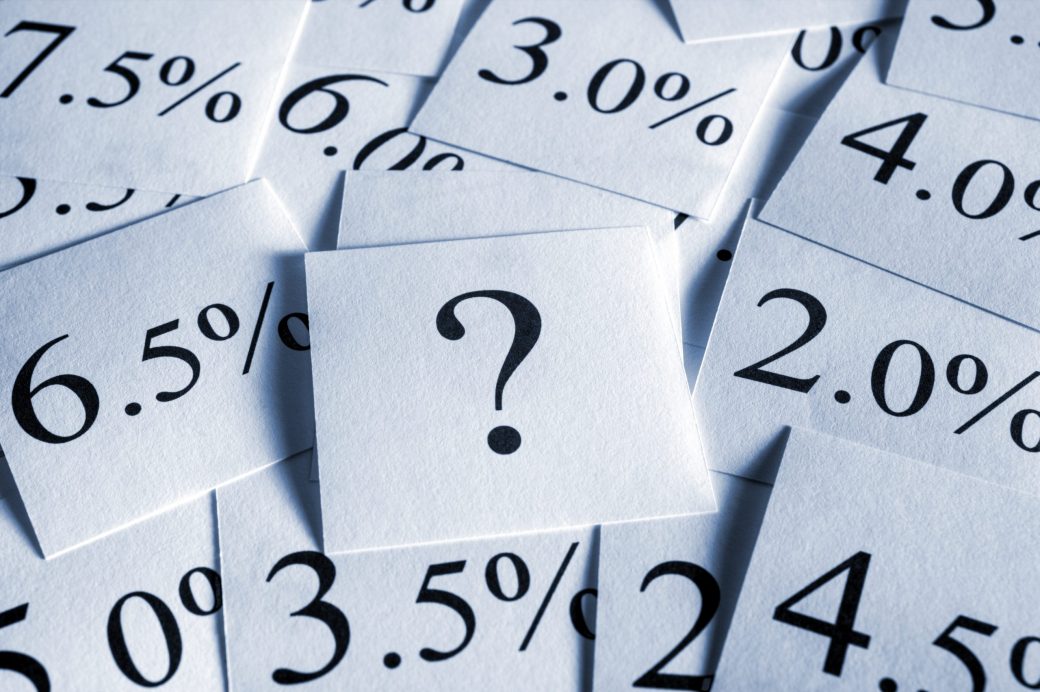There are a lot of terms and abbreviations in the finance world.
One of the most common abbreviated terms you may see when using credit cards is the letters “APR.” First and foremost, APR stands for Annual Percentage Rate and is set by the creditor.
The APR can be a useful tool for consumers, as having a standard for calculating interest rates allows you to better compare different options when applying for new credit.
When comparing which credit cards offer the best rate, if one card explained the finance charges at a daily rate and the other explained it monthly, it would be hard to compare the two.
APR also allows a comparison of different types of credit, including unsecured and secured debts.
Understanding APR Finance Charges for Credit Cards
Consider the following scenario: Someone you don’t know well approaches you and asks to borrow $100.
Having never lent this individual money, you ask friends and neighbors if this person has paid off previous debts on time in the past.
If the response is an overwhelming “yes,” odds are you’ll likely let them borrow your money.
To ensure this acquaintance pays you back like clockwork, every month until the full $100 is paid back, you may require the borrower to pay you $10.50 for 10 months.
The 50-cents would be the interest charged for borrowing the money, which adds up to five dollars at the completion of the loan.
Because your acquaintance had a good history of paying back loans, the cost to borrow the money was not outrageous.
So why do some people have to pay more than others?
Let’s imagine a different scenario.
An acquaintance asks you if you’ll lend them $100. When you investigate their credit history, you learn one of your friends had this experience:
“I lent them money and they paid me back two months late and only after I had to call them to request payments.”
It’s likely you would charge them a higher interest for the $100 loan, say around $12 for 10 months.
The extra $1.50 is added in because of the increased risk associated with the bad record of repayment.
Banks do the same thing by checking a consumer’s credit report for payment history and offering lower APR’s to those with better history.
Fixed vs Variable
When it comes to credit cards, the two basic types of APR are fixed and variable.
Fixed Interest Rate
With a fixed APR, the rate will not change over time unless one of the terms of the card changes and the client is notified.
Variable Interest Rate
With a variable APR, the interest rates will go up or down according to the prime rate.
One of the reasons credit cards tend to have a higher APR is because the bank does not have collateral to minimize the risk in the event that the consumer decides to stop paying on the card.
With auto loans or mortgages, the creditor can come back and repossess the car or foreclose on the home if the consumer discontinues payment.
In other words, the bank is guaranteed to be paid back for the car or home.
With a credit card, the bank cannot return and collect any of the possessions that the consumer has purchased with the card, meaning it’s a much larger risk for them to lend you that money.
Determining Your Interest Rate
In order to calculate how much interest will be added to the balance of a credit card at the end of the month, one must first determine the APR.
Take the balance on the account and multiply it by the APR, then divide by 12 for the number of months in a year.
The number will be the amount of interest that will be added to the account on a monthly basis.
Remember, in some cases, the creditor does have the right to increase fixed APRs, but they must notify the consumer in writing prior to doing so.
One of the things that can lead to APR hikes is missed payments.
When a credit card goes delinquent, the creditor may modify the terms of the original contract.
Store Cards vs Bank Cards
Most of the time, credit cards with the highest APR are store cards.
Store cards are applied for and used at individual stores although they are issued by larger banks.
For example, a Best Buy card will be issued by HSBC or Chase although the front of the card will say Best Buy.
Oftentimes store cards have APRs in the mid-20s when they are opened.
Other types of credit cards are bank cards.
This is your typical credit card that can be used anywhere that type of card is accepted.
Being aware of how interest will be calculated on your credit cards or any other loans is one of the key steps to proper debt management.


